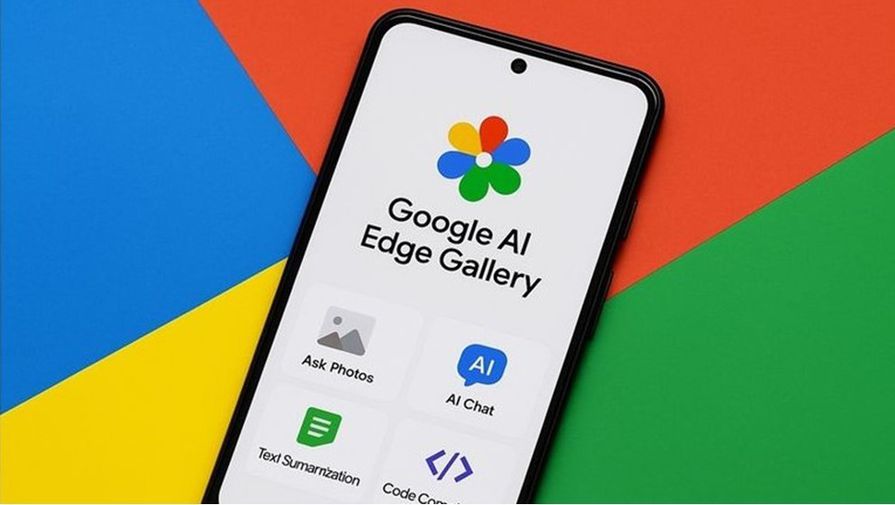Artificial Intelligence (AI) is developing very quickly, and one of the most interesting areas of development is edge computing. While cloud computing has revolutionized businesses, edge AI is facilitating real time decision making near or at the site of data production. Here comes Google AI Edge Gallery, which is proving to be a platform that revolutionizes by delivering powerful AI to edge devices.
Here, we will examine what Google AI Edge Gallery is, its importance, and how developers, businesses, and creatives can leverage it. If you are a tech community member, business owner, or AI engineer, this article has all you need to know about and utilize this incredible resource.
What is Google AI Edge Gallery?
The Google AI Edge Gallery is a curated model collection optimized for edge computing. On Google Cloud and developed to function harmoniously with Edge TPU and Coral hardware, it provides production-ready models of machine learning that efficiently run on low power, resource limited hardware.
Those models are applied across a broad variety of applications, such as object detection, image classification, face recognition, and speech processing, with custom solutions optimized for sectors like retail, manufacturing, health, logistics, and smart cities.
Why is Edge AI important?
Before discussing the details of AI Edge Gallery, let’s grasp why AI at the edge is important.
- Low Latency:
AI processes information locally at the edge, eliminating much of the need to push it to a cloud hub. This provides quick response times, something that is essential for applications such as self-driving cars or real time monitoring. - Enhanced privacy:
The sensitive information, like health data or facial recognition output, can be processed locally without internet transmission for enhanced compliance with privacy laws. - Lower Bandwidth Consumption:
By processing data locally on the device, less data has to be transmitted over to the cloud, which reduces bandwidth expenses and is more efficient. - Offline Capability:
Edge AI systems are capable of functioning even when disconnected from the internet, and thus are ideal for remote or unstable locations.
Key Features of Google AI Edge Gallery
Pre Trained Edge Optimized Models:
The gallery provides a broad choice of TensorFlow Lite models that are optimized to run directly on edge devices such as Coral Dev Board and other hardware that supports Edge TPU.
Easy Integration
Developers can readily implement these models within their apps through standard APIs and Google’s developer tools.
Flexible Workflows
Google enables users to customize and retrain models based on their own datasets, facilitating use-case-specific adaptation.
Open Source Support Several of the gallery’s models are available under open source licenses, which encourage community involvement and openness.
Popular Models Featured in the Gallery
Here are some prominent models available right now within the Google AI Edge Gallery:
- MobileNet V2 – Lightweight image classification
- SSD MobileNet V2 – Real-time Object Detection
- PoseNet – Human pose estimation for fitness, gaming, and beyond
- Facial Detection and Recognition Models – A Perfect Fit for Intelligent Security Systems
- Text Classification – Facilitates natural language understanding on devices
These are very power efficient models, with several of them capable of operating on devices that draw less than 5 watts of power.
How Developers Use the AI Edge Gallery
Here is a straightforward process to guide you through getting started:
- Choose a Model
Go to Google AI Edge Gallery and look through the list of pre-trained models available.
- Download the Model
Select the TensorFlow Lite version that has been optimized for Edge TPU and save it to your local system or device.
- Deploy to Edge Device
Deploy using Coral Dev Board, USB Accelerator, or another Edge TPU hardware. There is sample code and documentation available from Google to aid you in getting started.
- Fine Tune and Personalize
Utilize TensorFlow Lite Model Maker to fine-tune or retrain the model with your custom dataset.
- Monitor and Optimize
Monitor performance post-deployment using Google products such as Cloud Monitoring or TensorBoard and adjust accordingly.
How to install Google AI Edge Gallery to run AI models on a phone offline?
Real World Use Cases
Google AI Edge Gallery is applied to real-world scenarios across sectors:
🏪 Retail: Intelligent checkout systems that identify products and stop theft in real time.
🏭 Manufacturing: Artificial intelligence powered quality checks along production lines with real-time detection of defects.
🚚 Logistics: Real time visual recognition for package tracking and sorting
🏥 Healthcare: On device diagnostics within remote clinics, minimizing cloud infrastructure dependency.
🏙️ Smart Cities: Intelligent traffic management and public surveillance that minimize latency.
SEO Benefits: for Tech Businesses Using Google AI Edge. For startups and companies dealing with AI, incorporating Google AI Edge models into their products can also deliver.
Tech Authority: Publishing tutorials, case studies, or open source projects based on Google Edge models can increase your domain authority. Long tail keywords, such as targeting specific models or use cases like “TensorFlow Lite object detection on Coral TPU,” capture long-tail traffic.
Video Content: Showing edge AI applications in action can increase engagement and backlinks on websites such as YouTube.
Also read this:
Google Unveils AI Tool for Student Learning.
Summary
The Google AI Edge Gallery is not just a collection but a doorway to unlocking the power of machine learning for real world applications. With pre trained, low latency models that can be executed right on edge devices. Google is empowering a new generation of AI applications that are not just faster and more secure but also more efficient. Regardless of whether you are designing a smart surveillance solution, a factory automation solution, or a mobile health application, AI Edge Gallery provides you with the foundation upon which to create intelligent solutions that function in real time, with no need for the cloud.



